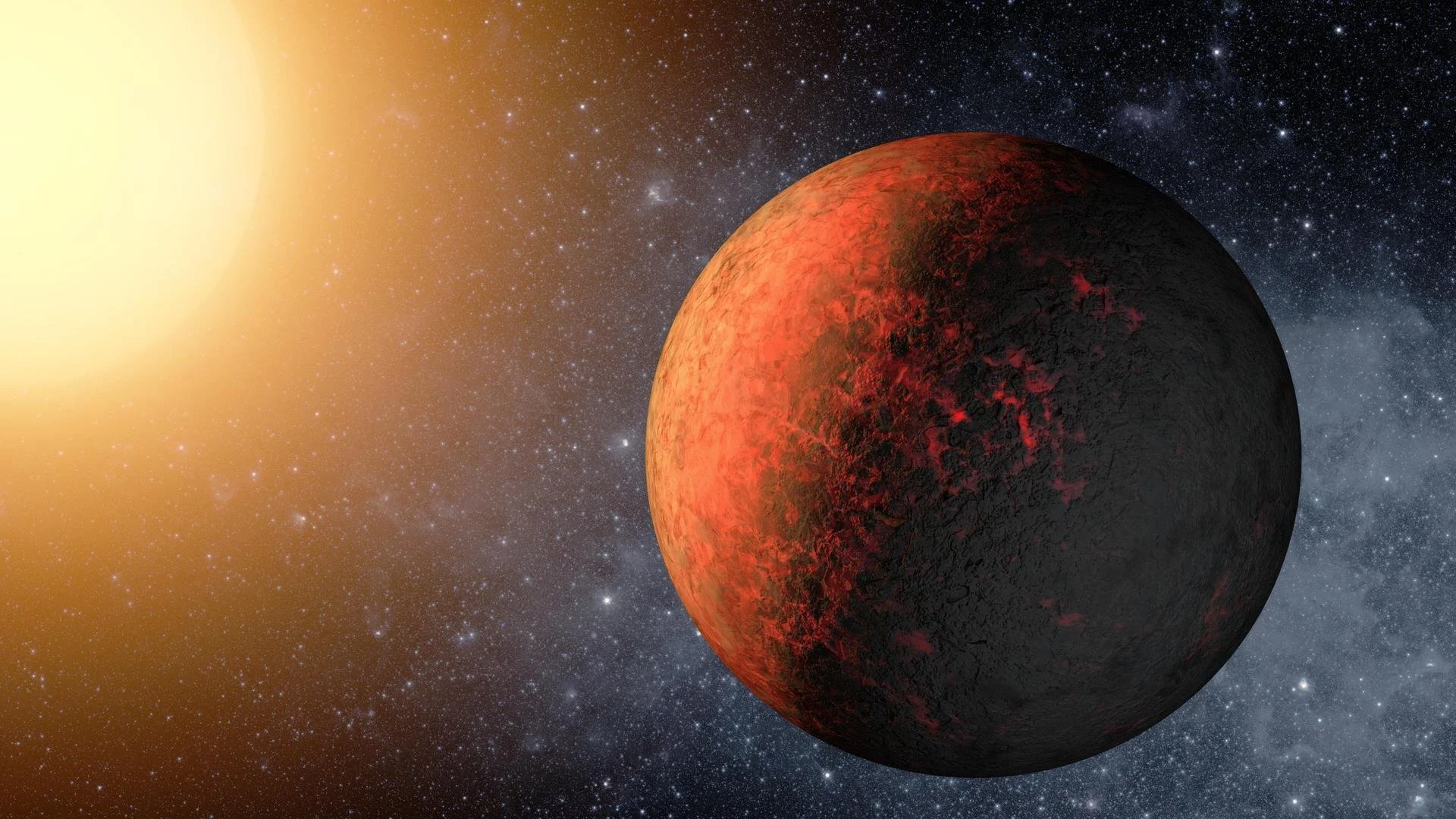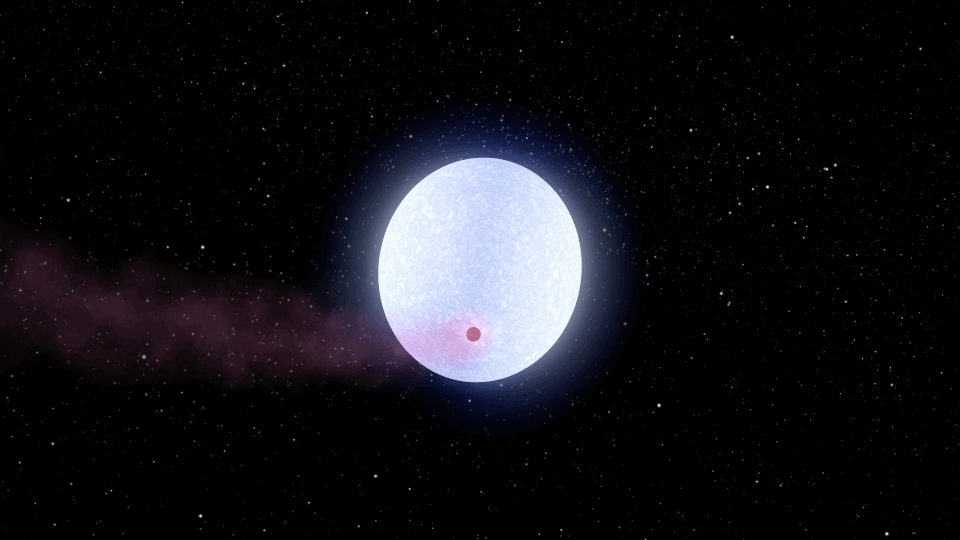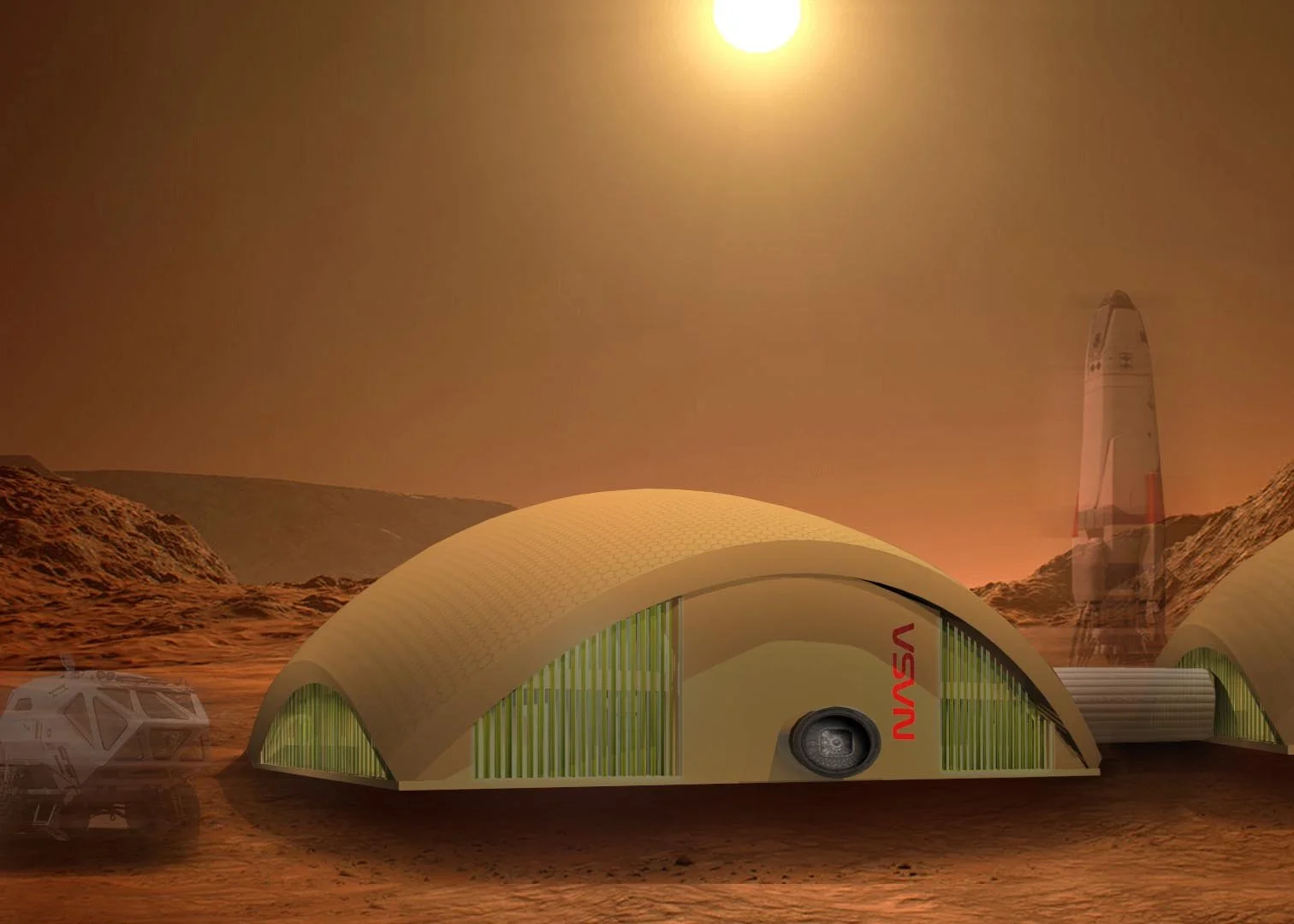Exploring Planets in Other Solar Systems
How scientists determine the chemical composition of exoplanets’ atmospheres
Image credit: NASA/Ames/JPL-Caltech
by Molly McCrory
January 18, 2022
Nitrogen. Oxygen. Carbon dioxide. Methane. The gaseous markers of life. These gases flow through our atmosphere, sustaining us even as we produce them. If we ever find a planet with a civilization, it will likely have an atmosphere similar to our own. But how will we know?
It wasn’t until the 1990s that astronomers even had proof of planets orbiting a star outside our solar system. These planets are known as exoplanets, and scientists have been searching for more information about them ever since. Exoplanets are far from Earth and often small compared to their stars, so it is difficult for scientists to observe them directly, especially with most telescopes in use.
One of the ways scientists look for potential indicators of life and other information is through exoplanet spectroscopy. Spectroscopy is a method for analyzing the chemical content of material using light.
Click on the image to enlarge it. Image credit: NASA
“Every element, if you put it into gas form and you shine a light through it, will produce a unique signature in the spectrum that’s produced,” said Kaitlin Rasmussen, a postdoctoral researcher in astrophysics at the University of Michigan. “So if you have a lightbulb and you look at it through a prism, the light is going to spread out into a rainbow.” But if you have a hydrogen lamp, with hydrogen gas enclosed in glass, and you shine that light through a prism, there will be dark gaps in the rainbow, she explained. These dark gaps’ precise location and size are unique to each element, like an elemental fingerprint. Like chemical detectives, scientists can use spectroscopy to figure out the elements that make up a given material.
Chemicals’ spectroscopic signatures are made up of their component elements. For example, carbon monoxide is composed of carbon and oxygen. That means it has a spectroscopic signature consisting of dark gaps in the carbon spectrum and dark gaps in the oxygen spectrum. Using spectroscopic data like this, scientists can find the chemical composition of any material, including the atmospheres of far-off planets. Researchers like Rasmussen use simulations of potential atmospheres to compare their data to figure out the compositions of an exoplanet’s atmosphere.
“You take your model atmosphere spectrum and your data spectrum, and you slide them across each other until you get a perfect match,” Rasmussen said. That perfect match can tell scientists, say, that the atmosphere has 30% methane or 47% nitrogen. The specific proportions can give information about how a planet formed, its overall makeup, and even if it could sustain life.
There are two types of spectroscopy: emission, where scientists look at the light coming from a source, and absorption, where researchers look at light absorbed by a source. In exoplanet spectroscopy, experts most often use emission spectroscopy. They use the light from planets to see the chemical makeup of their atmospheres.
That requires two essential things: the planet is large enough that light can be seen coming from it, and the planet is hot enough to emit light. Think about your stove. Whether you have a gas or electric stove, it starts to glow orange-red, either in the form of fire or heated metal. That orange-red color is the result of the heat emitting visible light. Everything emits some kind of light. Even we humans, with our average temperatures of about 99 degrees Fahrenheit, emit infrared light, which is how devices like night-vision goggles work. When a material gets a lot hotter, it starts to glow with visible light, which happens when your stove glows or when something catches fire. That is also what causes stars and planets to shine.
Once scientists observe the light from these planets and gather their spectroscopic data, that information can show a lot more than just whether the atmospheres contain a lot of carbon dioxide. Rasmussen studies what are called “hot Jupiters.” These exoplanets are exactly what they sound like: Jupiter-sized planets that are hot because they are close to their suns. These planets reach temperatures of about 2,000 kelvins (or more than 3,000 degrees Fahrenheit). The question that Rasmussen is trying to answer is, did they form close to their suns, or did they form further out and move in?
Hot Jupiter animation. Image credit: NASA
“Planet formation says that if you form really far out, you should have a totally different atmospheric composition than if you form really close in,” said Rasmussen. Researchers look at the ratio of carbon to oxygen to answer this question. If there is much more carbon than oxygen, the planet must have formed far from its sun, but if there is less carbon, the planet probably formed close to its sun. This can give an overview of how these planets tend to form, said Rasmussen, which adds to the understanding of how their solar systems formed.
Solar systems form in what is called an accretion disk, which, from a distance, looks a lot like a spinning plate, but is massive and made of space dust, said Rasmussen. As pieces of this space dust move around and collide, they start to clump together, forming space pebbles, then space boulders. At the center of the accretion disk, most space dust combines into a star, and the space boulders clump together until they form planets. The type of planets they form depends on what made up the space dust. For example, Earth formed from a lot of oxygen and silicon-based dust, but Saturn formed from mainly hydrogen and helium particles. Accretion disks take a long time to turn into solar systems, so scientists don’t know what happens inside them. As researchers learn more about how planets formed, they can better understand what goes on inside accretion disks and potentially why they do what they do.
Exoplanet spectroscopy is an evolving field, with researchers finding new information that can tell them more about other planets in our universe all the time. The James Webb space telescope, which launched in December 2021, carries instruments that include the Near-Infrared Spectrograph, or NIRSpec, and the Mid-Infrared Instrument, or MIRI. Both can be used for infrared light spectroscopy, and Rasmussen is one of the researchers who will use their data to further her studies.
These new instruments are incredibly sensitive and can take advantage of the large mirror array on James Webb, meaning the measurements taken with them will be more detailed than any taken so far. As new telescopes are built, researchers require new techniques to analyze their spectroscopic data better. As Rasmussen said: “That’s something that is still at the absolute cutting edge.”
Molly McCrory
Molly McCrory is an enthusiastic lover of science and has been for as long as she can remember. She received her bachelor's degree in physics from Trinity College Dublin, where she also wrote for Trinity News and co-hosted and produced a podcast called Trinity Talks Science. She is in her second year of the Johns Hopkins University Science Writing Program.

















